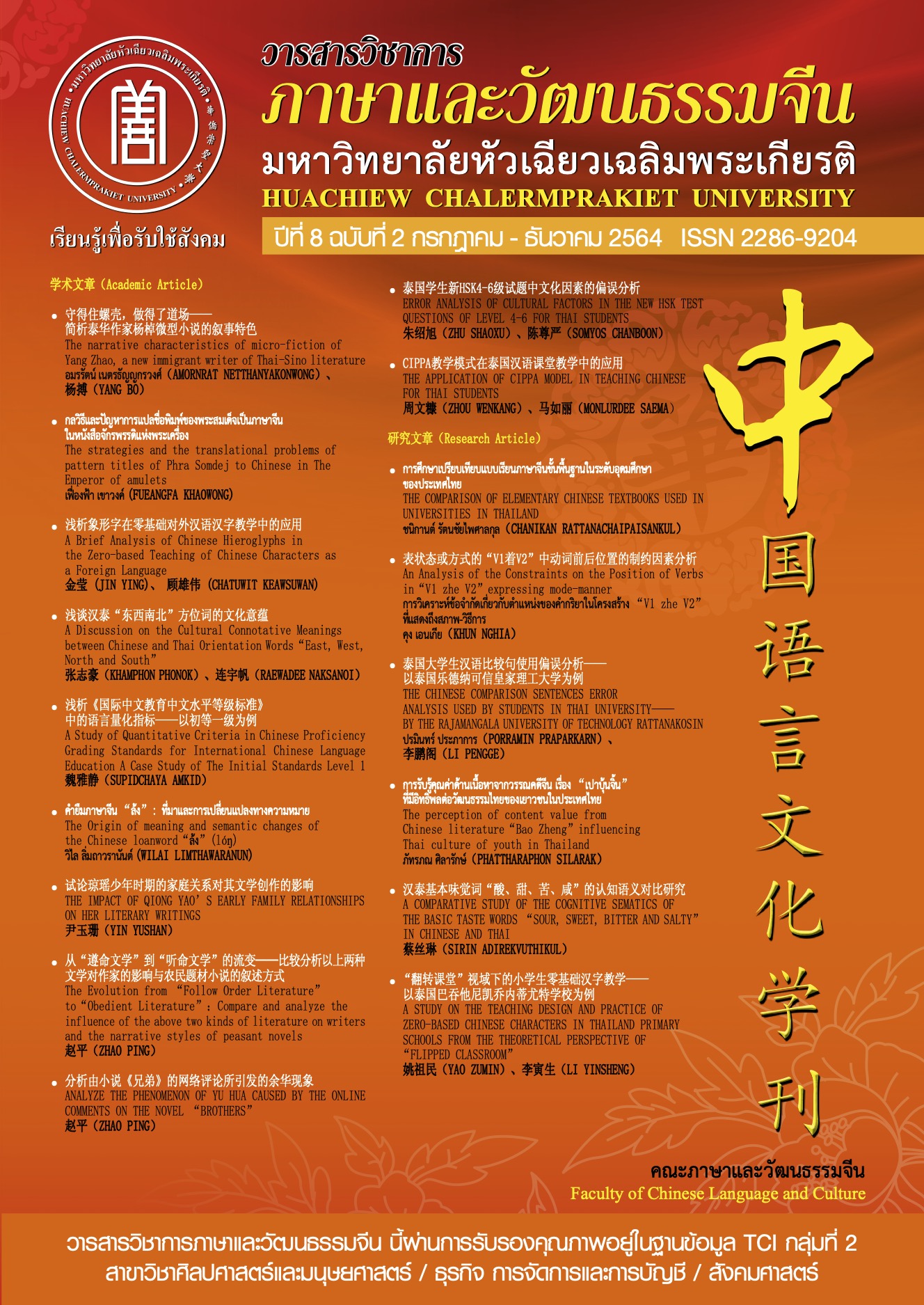An Analysis of the Constraints on the Position of Verbs in “V1 zhe V2” expressing mode-manner
Keywords:
constraining factors, internal process structure of verbs, image features, semantics of objectAbstract
As the order of the two verbs in the "V1 着V2" structure in which V1 represents the mode or manner of V2 has not been studied in depth, this paper aims to analyze the mechanism that restricts the front and back positions of these two verbs. Based on the analysis of the data collected from Corpus of Beijing Language and Culture University, the findings show that the internal process structure of the verb is the main factor that constraints the order of the two verbs: there is a positive correlation between the inception strength (starting time) of a verb process structure, its duration (continuous phase), and the amount of mode-manner meaning shown. These conditions make it easier for a verb to serve as a V1. On the contrary, stronger ending times of a verb process structure and a high number of features (strong action and transformation meanings) make a verb more suitable to serve as V2. This paper hopes to enhance Chinese language learners’ understanding of this structure and to help teachers to better explain students’ common errors of this structure.
References
丁加勇.(2001). V1着V2结构的语义框架,《常德师范学院学报(社会科学版)》,(2).
王丽彩.(2008).《现代汉语方式范畴研究》, 暨南大学博士学位论文.
王素改.(2018). 动宾式“V1+着+V2”结构探析,《广西师范大学学报:哲学社会科学报》,(3).
许卫东.(2007). 现代汉语中“V1着V2”结构的复杂化,《通化师范学院学报》,(9).
许卫东、张道新.(2002).“V1着(O)V2”结构内部语义关系分析,《辽宁工学院学报》,(6).
刘若杨.(2010). 临摹逻辑层面时序原则的“V着(N)+VP”格式,《中北大学学(社会科学版)》,(2).
吕叔湘.(2008).《现代汉语八百词 (增订本)》, 北京: 商务印书馆.
许娜.(2017).“V1+着+V2”格式的性质和类型探究, 《海南热带海洋学院学报》,(1).
李可胜.(2015). 连动式的时间模式和有界性的时体语义贡献,《语言教学与研究》,(2).
李可胜.(2016). 连动式的结构机制: PTS、情状机制和 VP 的外延,《外国语》,(1).
沈立新.(2004).“V1着+V2”结构句式“连动”属性的质疑,《楚雄师范学院学报》,(1).
李向农,张军.(2001).“V着V”结构的意义关系及结构中“ V”的语义特征分析,《华中师范大学学报(人文社会科学版)》,(3).
陈彦青.(2017). 《汉语连动式语义范畴的认知研究》, 广州大学硕士学位论文.
李恩光.(2012). 认知语法关照下的汉语连动式语义融合探讨,《郑州航空工业管理学院学报(社会科学版)》,(2).
苏艳梅.(2019).《“V1着V2”动宾结构研究》, 郑州大学硕士学位论文.
张琬.(2013).《连动式到状中式的连续统研究》, 上海师范大学硕士学位论文.
侯友兰,徐阳春.(2002). "V1着V1着……V2……"句式语法语义分析,《语言教学与研究》,(5).
贺茉莉,周艳华.(2009). 从认知语言学看句法中的顺序象似性,《中国科技信息》,(3).
胥娜娜.(2019).《“V着(N)+VP”结构探析及其对外汉语教学研究》, 南昌大学学位硕士学位论文.
郭锐.(1993). 汉语动词的过程结构,《中国语文》,(6).
袁梅.(2002). 论“V1 着V2”结构的性质,《唐都学刊》,(3).
彭育波.(2004).《“V1着V2”结构多角度研究》, 华东师范大学博士学位论文.
Downloads
How to Cite
Issue
Section
License
บทความที่ได้รับการตีพิมพ์เป็นลิขสิทธิ์ของวารสารภาษาและวัฒนธรรมจีน มหาวิทยาลัยหัวเฉียวเฉลิมพระเกียรติ
บทความใน “วารสารวิชาการภาษาและวัฒนธรรมจีน” เป็นทรรศนะของผู้เขียนโดยเฉพาะ กองบรรณาธิการไม่มีส่วนในความคิดเห็นในข้อเขียนเหล่านั้น




